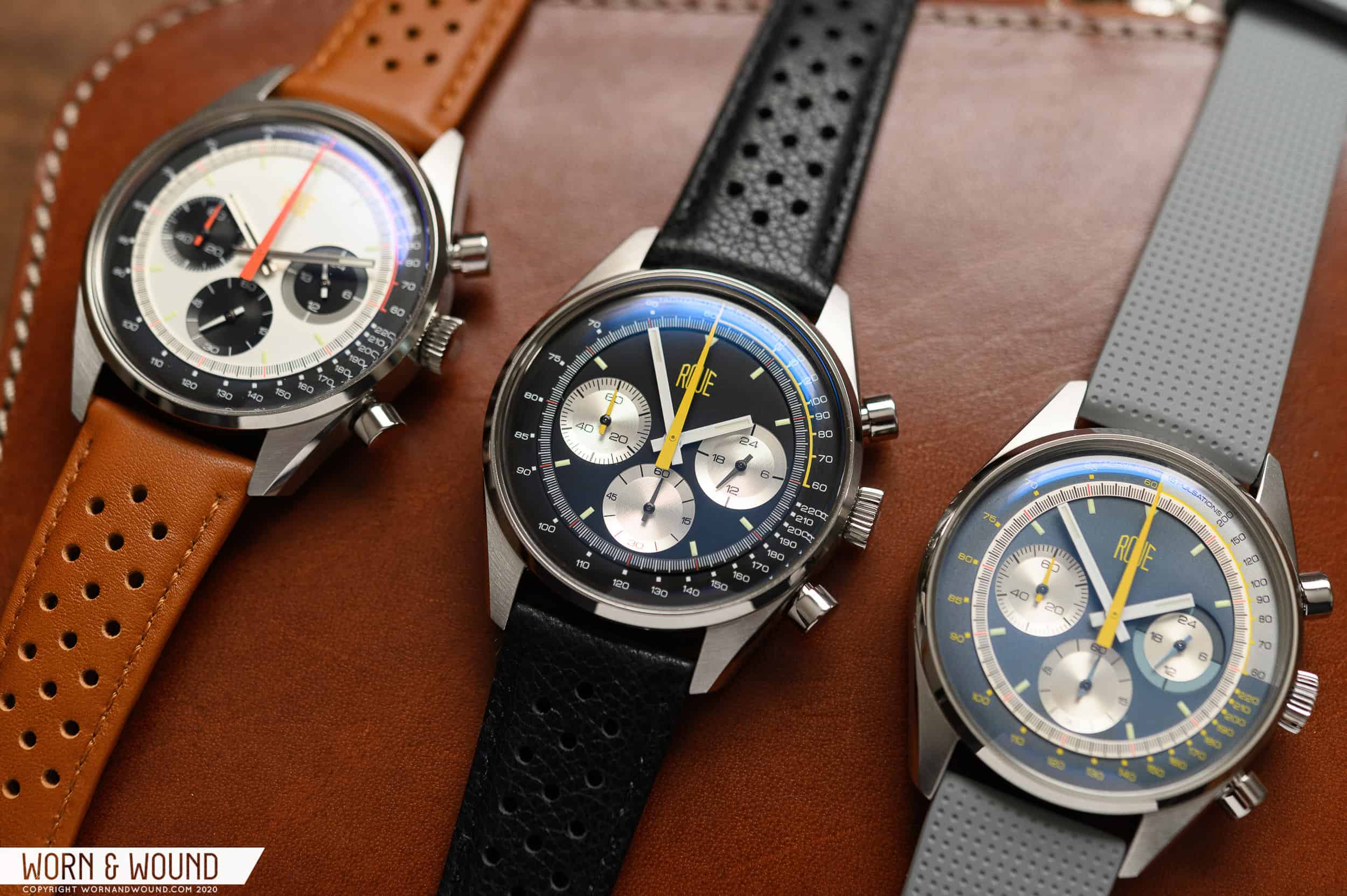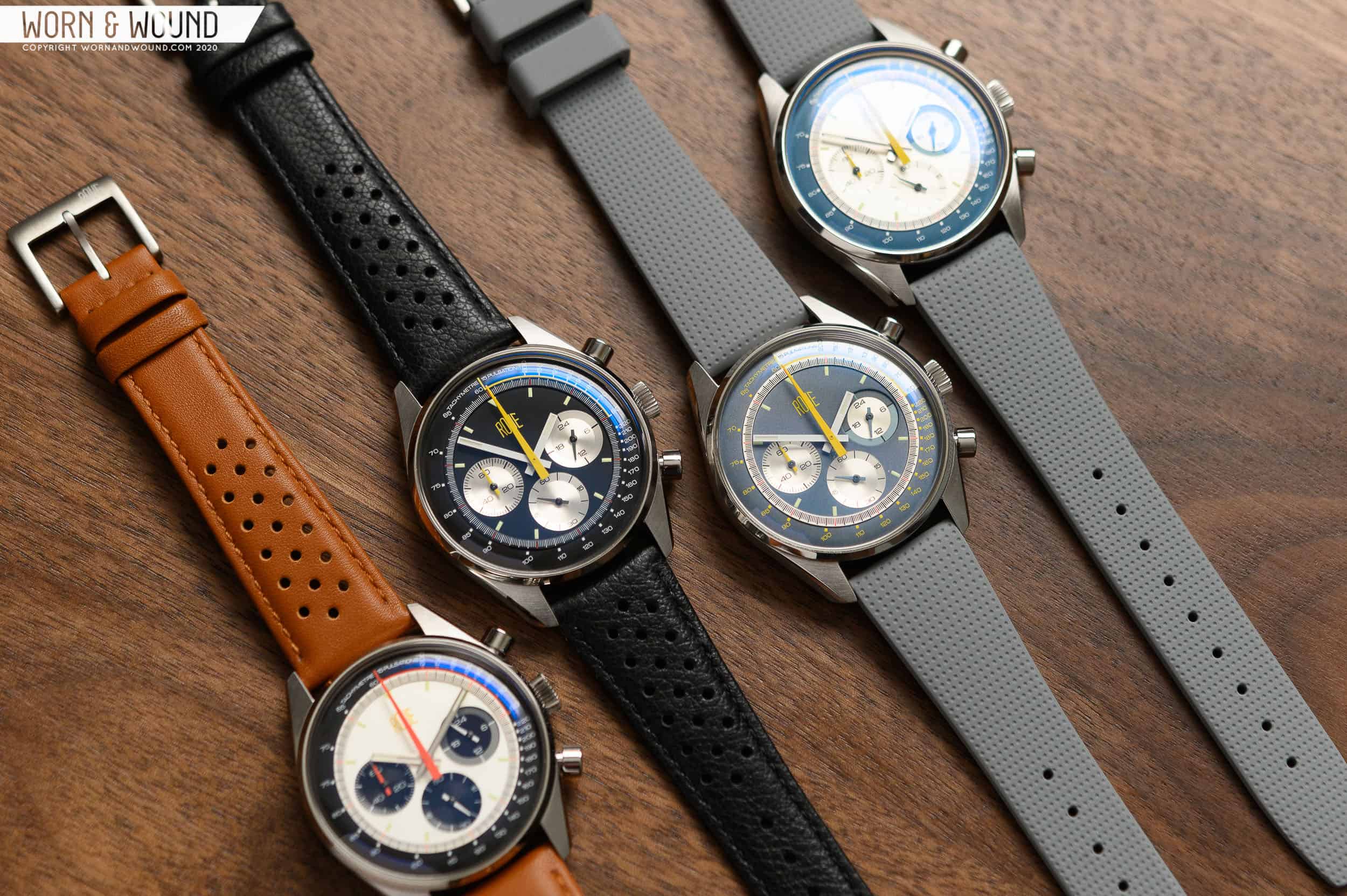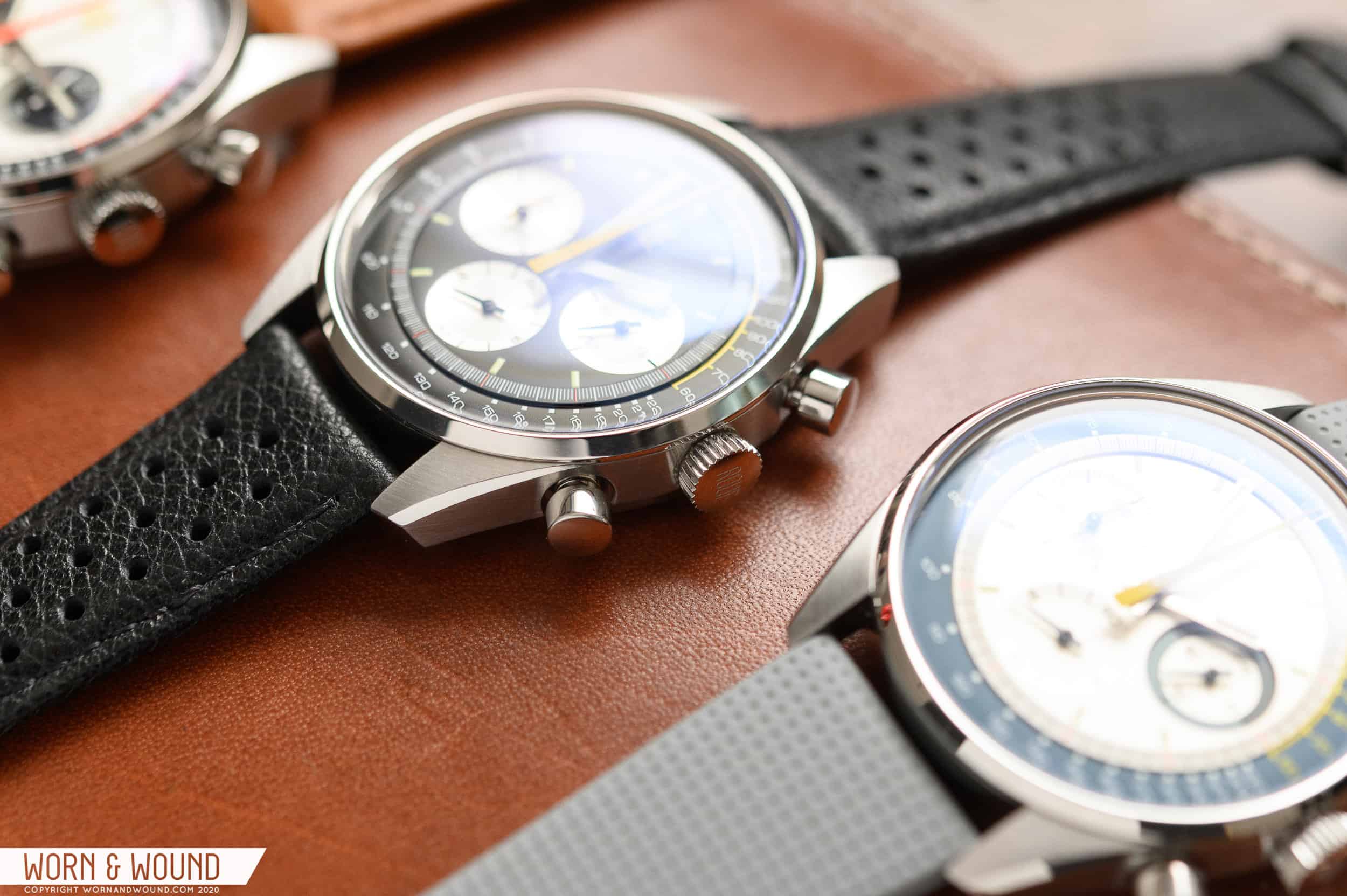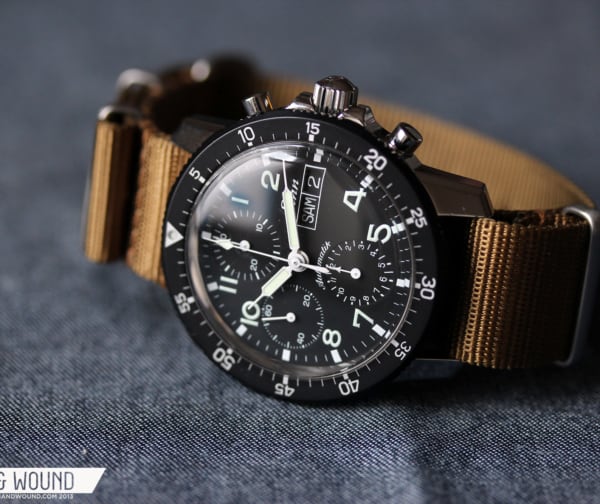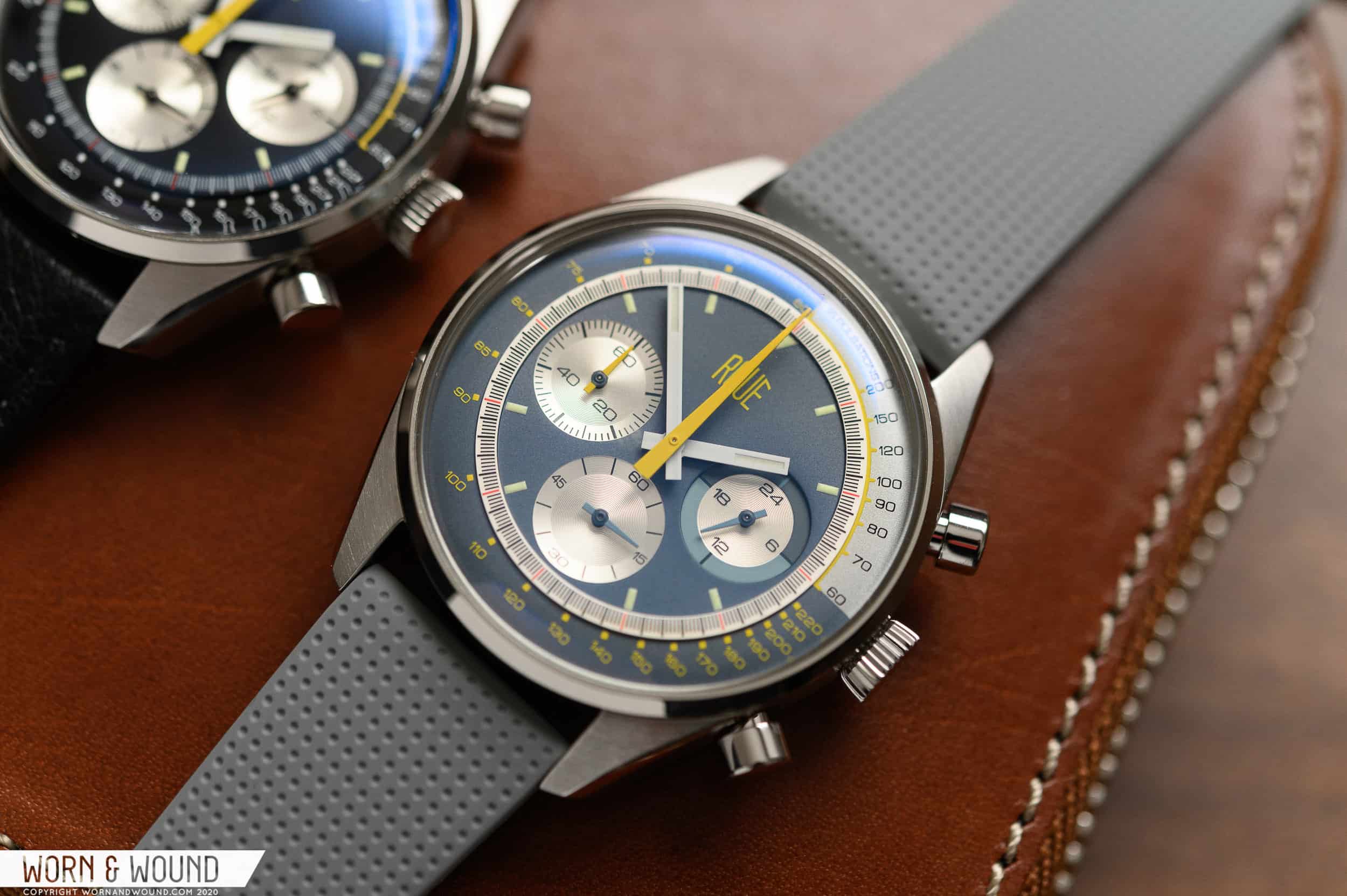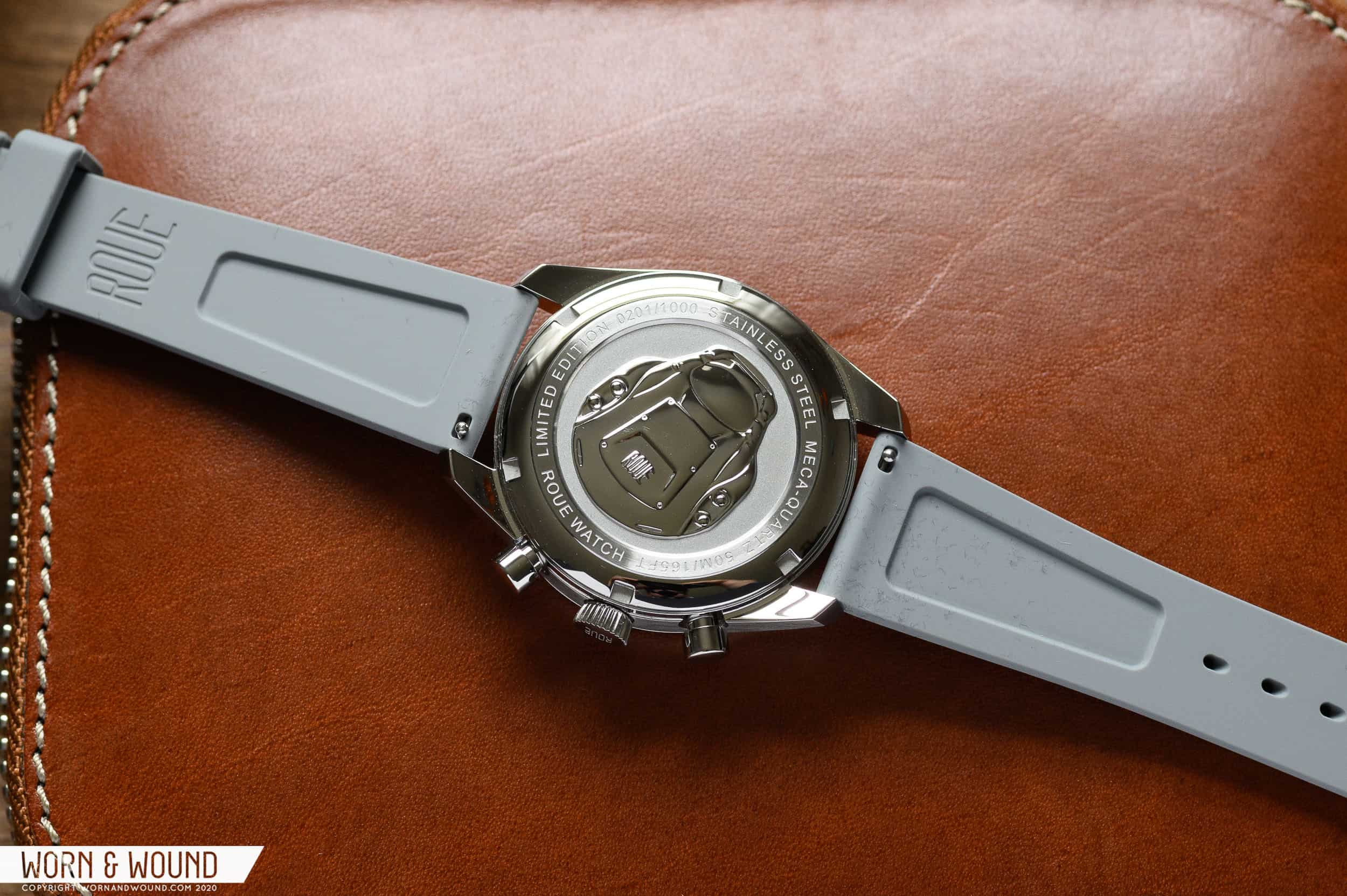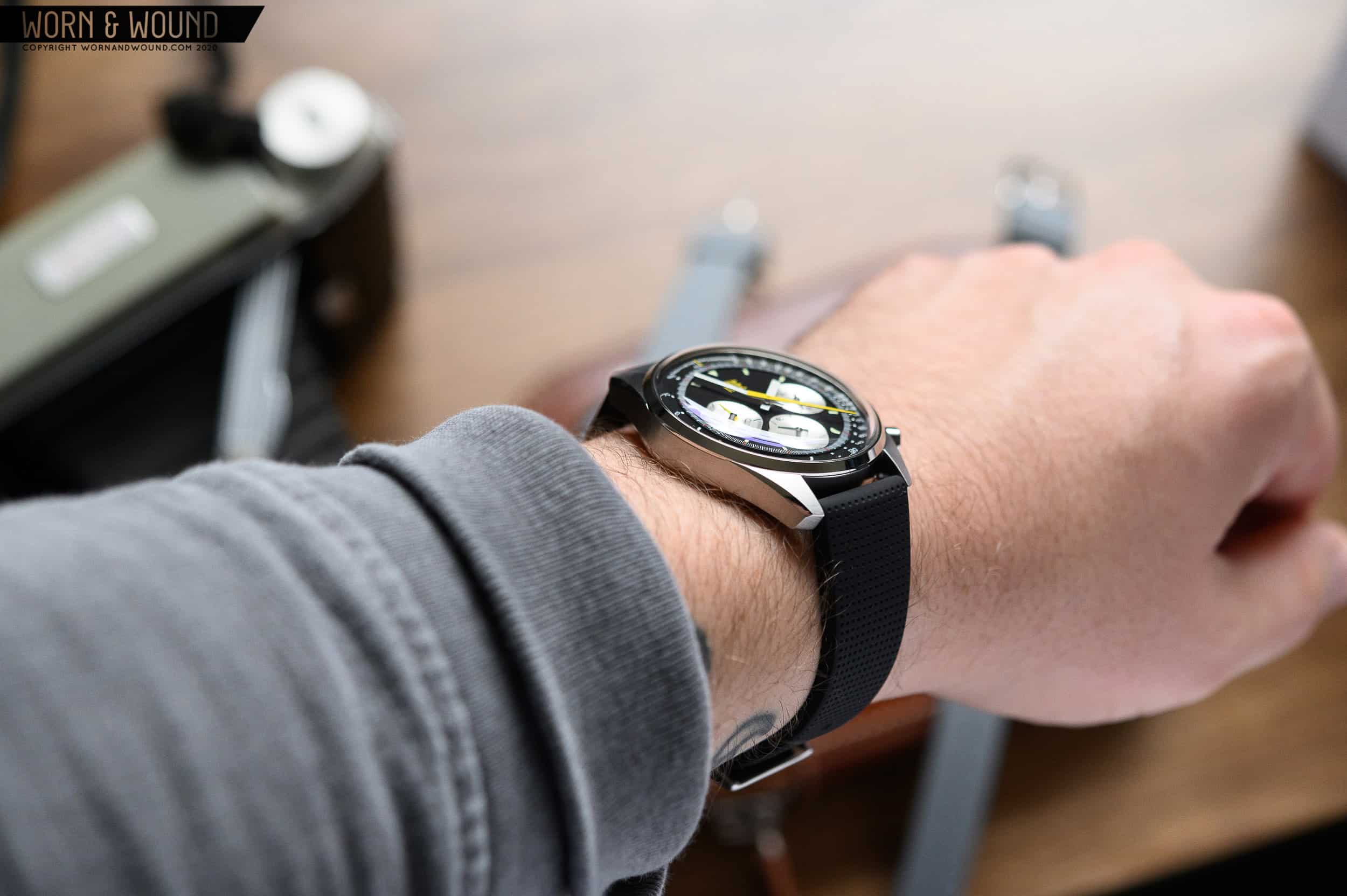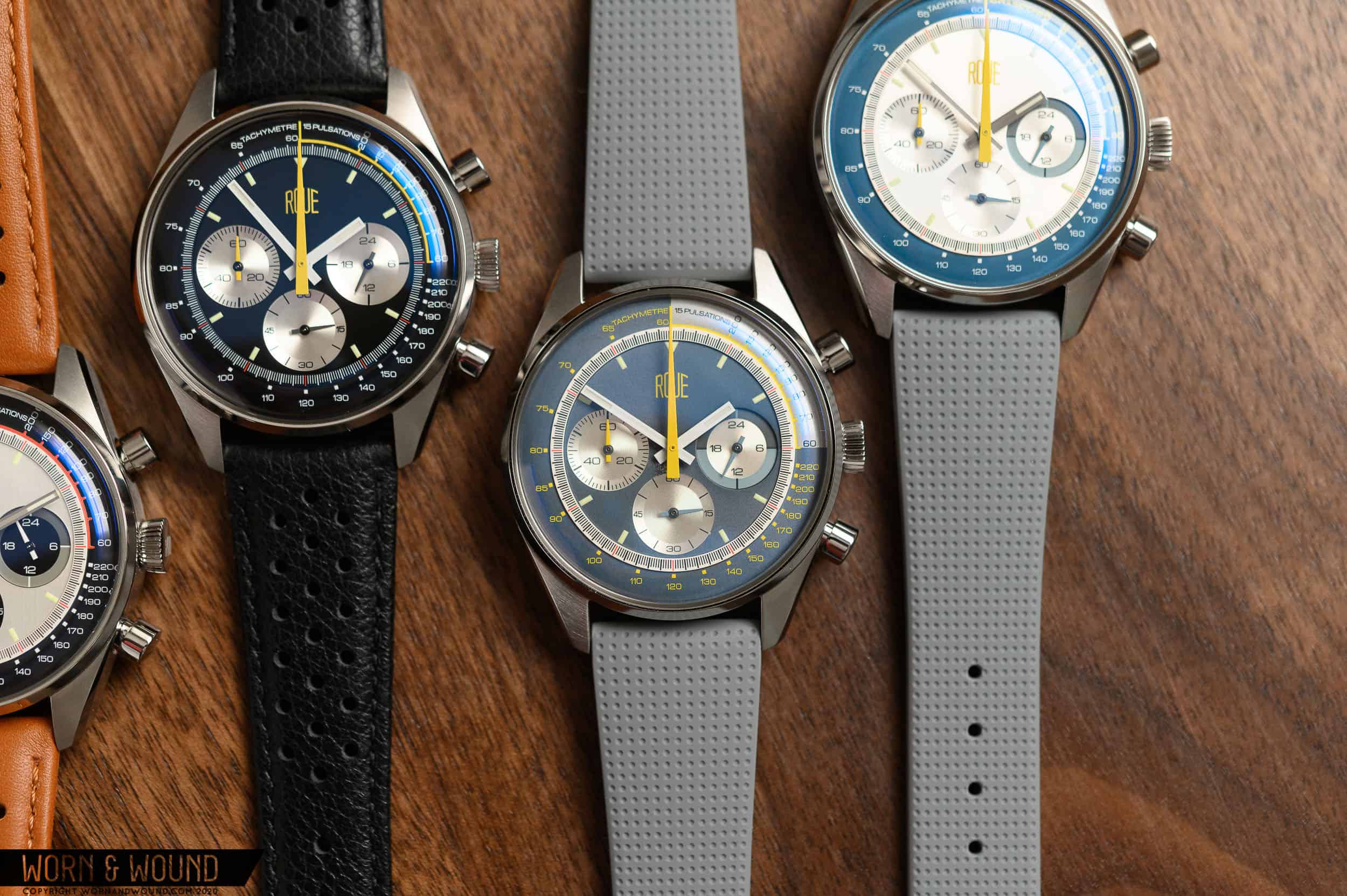Roue Watches started out back in 2017 with a lineup of quirky quartz watches, each varying wildly in style and functionality. Fast forward two years later to 2019, Roue released another line of “TPS” chronographs – heavily inspired by the mid-century racing scene. Another year later, and creator of the brand Alex Iervolino has refined the original TPS models and added two more interesting and unique colors to the lineup. Instead of just slapping a new dial on the existing watch, Roue went the extra mile to improve the watch in many ways. There’s a new crystal up top which has decreased distortion, you’ll notice higher quality brushing on the case, brighter Swiss Super-Luminova lume, new leather straps, and some new hands and color tweaks on the dial. For a quartz chronograph that’s priced under $300, the TPS makes a compelling choice for those who want to add some vintage chronograph charm to their collection without breaking the bank. Let’s take a closer look at these handsome Porsche 910-inspired watches that pick from all of the best features of 1960’s-era chronographs without falling too far into homage territory. But first, a quick who’s-who of the TPS lineup:
Review: The ROUE TPS Chronograph
TPS Two – Brushed silver dial, with black subdials and orange accents. The most classic looking of the bunch.
TPS Three – “grizzled blue” dial with yellow accents. This one is a very interesting shade of blue-grey. The base color really makes the yellow pop. Out of the four reviewed, this is the most unique.
TPS Four – Black with cream sub dials and yellow accents. Classic reverse panda looks. Black with yellow accents really pops.
TPS Five – Brushed silver dial with matching sub dials, surrounded by a blue tachymetre scale and yellow accents throughout.
Review: The ROUE TPS Chronograph
Case
40mm is an ideal size for a chronograph. Large enough to make enough room for an intricate dial with sub dials, but small enough to wear well on the wrist. The Roue TPS nails that “just right” size, fitting nicely on my 6.75” wrist. The case itself is crafted from 316L stainless steel and features fine brushing on the top and sides of the case. It’s water resistant to 50 meters, which is enough for some casual hand washing and splashes, but Roue suggests not to take the watch swimming. The transition is broken up by a polished bevel with a crisp delineation between the different finishing techniques. Around the domed mineral crystal, you’ll find a slim polished bezel that helps marry the domed crystal to the flatter case. In profile, the case curves gently from lug to lug. The domed crystal and bezel are balanced out well by the case back underneath which has a polished side, mirroring the polish on the bezel. Each lug terminates in an angled flat surface that’s treated with the same brushing found on the rest of the case. Handsome and refined, the case draws inspiration from several 1960’s chronographs, easily falling in line with vintage Heuer, Breitling, and Girard Perregaux chronographs from the 60s.
On the side of the case, you’ll find an oversized signed crown to set the time. On either side of the crown is a chronograph pusher. Up top is the start/stop, while the bottom button resets the mechanism. Since there’s a Seiko VK63 Mecha-Quartz movement inside, the start/stop and reset are tied into actual mechanics of the movement and provide a nice tactile “snap” when operating, not just a mushy, unsatisfying button-like push that you’d get from operating a digital watch. Flip the watch over, and you’ll find a depiction of the main source of inspiration for the watch — a Porsche 910. One of Porsche’s most beautiful historic race cars, the 906/10 was the winner of the 1967 Nürburgring 1000km race, and helped to set the stage for the 908 and LeMans winning 917. Surrounding the car is a list of specs, with each watch receiving an individual number out of 1000 pieces. Of course the case design and finishing is important, but it’s the dial that can make or break a chronograph.
Dial & Hands
Looking at the dial, there’s quite a bit going on. Multiple scales, several layers adding depth, and well planned color schemes all combine together to create the magnetic dial of the Roue TPS. Let’s start from the outside and work our way in. Around the furthest edge of the dial, you’ll find a dual pulsometer/tachymetre. The first quarter of the dial is a pulsations counter that’s set up for 15 pulsations. By hitting the chrono start pusher and stopping when you count 15 units, the seconds hand will be pointing to the number of pulsations per minute. For example, if you’re trying to calculate your heart beat, simply hit start, count to 15, and wherever the hand is at will give you the approximate number of beats per minute. Roue eliminated the first few numerals on the standard tachymetre scale, which was a wise move. The chances that you’ll be able to accurately calculate something moving 500 miles per hour is slim to none, and on most bezels, the word “tachymetre” takes up a good amount of the section that the pulsations scale does. So if you’re one of the few out there who does use the tachymetre as intended, you’ll have to start at 220 for your base calculation. On all four iterations of the TPS, the pulsation scale is highlighted by an accent color, or on the blue-dialed vacant, a silver base for the numerals. Working inwards, there’s a raised minutes scale that’s highly detailed. Colorful hash marks denote five minute increments, while finer marks fill the space in between. Further towards the center, after a minuscule step down, there are small rectangular plots of lume for each hour, save for those blocked out by sub dials and a small triangle denoting 12 o’clock.
At 3, 6, and 9 o’clock, you’ll find three perfectly sized sub dials. Each dial features a pattern of concentric circles from the inside out. At 3, there’s a 24-hour time indicator. At 6, you’ll find the running seconds sub dial, while at 9, there’s a minute totalizer that counts up to 60. The contrasting sub dial base colors really pop out in three of the four models, while the cream/blue version blends in a little bit more. As far as functionality goes, the TPS are a bit limited by the Seiko VK63 movement inside. A 24 hour indicator isn’t the most useful (to me, at least), while the 60 minute totalizer is a bit cluttered and hard to read when precise timing is required. That’s not to say that it’s totally illegible, I just found myself having to look a little harder than “at a glance”, yet slightly less than “bust out the magnifying glass”. I do appreciate that this sub dial has a different colored hand from the other two, helping out the visibility a little bit. Working into the very center of the watch you’ll find the main hand set. The hour and minute hands are either rendered in a stark white, or a brushed/polished steel, depending on the color of the watch. The white hands stand out nicely from the black and grey-blue dials, while the brushed and polished versions on the other two add a touch of class. The hands are stick-shaped and terminate in a flat edge. For the chronograph seconds hand, you’re treated to a wedge-shaped hand that tapers evenly from the base to the tip. Three out of four TPS have a bright yellow hand that coordinates with accents on the dial, while the last features a bright orange hand.
The dial and hands are busy, with color accents, small hash marks, different depths, and patterns galore. Roue managed to balance all of these interesting elements extremely well, resulting in a handsome looking watch that works better in the metal than my words on screen imply. The colorful pops are fun and funky, staying true to the chronographs of the 1960s. The dual pulsometer/tachymetre scales are more useful than you’d think too. These watches are more colorful than something I’d typically reach for, and they’ve grown on me quite a bit during my time with them. Roue proves with the TPS that busy dials can be fun and interesting without going completely off the rails.
Movement
Inside each of the four TPS chronographs, you’ll find Seiko’s SII VK63 Mecha-quartz movement. Our own Mark McArthur-Christie wrote up an excellent article on the subject that you can read right here. The movement is a blend of quartz and mechanical technology, a hybrid of the two. Inside, you’ll find mechanical levers, hammers, wheels, and other pieces. The heart of the movement is regulated by a base quartz movement that keeps accurate timing while running on a battery. You’ll notice when operating the chronograph pushers that the actuation of each results in a mechanical “snap”. More like pushing an actual mechanical chronograph pusher than an electronic button moonlighting as a pusher. Once activated, the chrono seconds hand ticks around the dial with a slightly jumpy mechanical movement, versus a clean sweep. Once you’re done timing, the reset button snaps the seconds hand and sub dial back to zero back to the start position. I touched on it briefly earlier in the review, but the movement only allows you to do so much with the watch. The 24-hour indicator may be more valuable to some than others, while the 60 minute totalizer remains a bit hard to read. Overall, for a chronograph that comes in just under $300, the movement makes perfect sense. It’s affordable, reliable, and easy to use.
Strap & Wearability
To keep the TPS secured to your wrist, you’ll have the option of using one of two included quick release straps. The watch comes with a silicone rubber sports style band that features a fine dot matrix pattern on the top surface, a smooth bottom, and a brushed signed clasp. The silicone strap is pliable, thin, and slightly tapered — resulting in a comfortable fit. Instead of traditional spring bars, each of the 20mm straps comes with an integrated quick release spring bar that makes strap changes a quick and easy affair. The second strap option is crafted from genuine leather with rally-style perforations three dots wide. While the leather strap looks nice, the quality of the leather is a bit of a let down. It’s thin and comfortable, but that thinness comes at a cost. It feels cheap and a bit like it’s filled with foam. Although having two strap options in the box is a nice thought, I’d rather have quality over quantity. Putting the watch on a third-party strap does elevate the watch quite a bit. I’ve been enjoying the black dialed TPS One with a thick and rugged natural veg tan leather strap that I’ve been wearing regularly for a few years now. While the watch doesn’t look bad on a single pass nylon strap, I think it shines on a two piece leather.
On the wrist, the watch wears quite well. At 40mm wide by 48mm lug to lug, it’s moderate size will suit a variety of wrists. On my 6.75” wrist, the lugs are well within the bounds of my wrist with some room to spare. A few millimeters of the watch’s overall 13.4mm thickness is taken up by the domed crystal and bezel, which don’t really contribute to the visual thickness of the watch. The mid case makes up the bulk of the height, while a portion of the case back hangs below. One thing that’s stood out while wearing the TPS is the flatness of the lugs. When looking at the angled shape, they’re wider at the top than the bottom, which results in the lugs feeling like they stick out a bit. This makes the watch feel a bit flat at times, making me wish the lugs curved down to hug the wrist just a little bit more.
Conclusions
Although I wasn’t able to check out the first iteration of the TPS, it’s nice to hear how Roue improved on an already solid design while adding two new compelling color options to the lineup. The look and finish of the watches are of a higher quality than the $290 price tag suggests. There are a few other watches in this category (the Dan Henry 1962 Racing Chronograph comes to mind), but I think Roue’s playful use of color and keen eye for balance separates it from the rest. While the watch is clearly inspired by racing chronographs of the 1960s, the watch stands on its own. This watch is for fans of vintage chronographs who don’t want to deal with the high price tag and potential for hassle that comes with a true vintage watch. The mecha-quartz movement makes the watch plenty affordable and reliable, making it an excellent grab-and-go watch in your collection. Roue Watches were already off to a great start, and this second iteration of the TPS proves that the brand is heading in the right direction.









 Featured Videos
Featured Videos




